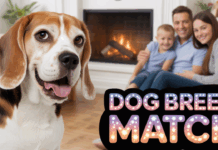Last Updated on April 29, 2023 by Dogs Vets
How to Set Up a Successful Veterinarian Practice with the Right Equipment
When you’re thinking of setting up a veterinarian practice, you want to ensure its success and profitability in the long term.
To have a successful veterinarian practice, you will need to invest in the ideal equipment. It should be high-quality and durable to provide optimal services for your clients.
After you’ve locked down on a location for your practice, the first thing you should do is search for veterinary equipment for sale, whether online or near your practice. Finding the perfect equipment at great prices will keep your spending under control in the initial phase of your business.

More on How to Set Up a Successful Veterinarian Practice
If you are a veterinarian who wants to start your own practice, you might be wondering what kind of equipment you need to provide quality care for your patients.
There are many factors to consider, such as your budget, your space, your services, and your preferences. In this blog post, we will give you some tips on how to choose the right equipment for your veterinarian practice.
– First, you need to decide what kind of services you want to offer.
- Do you want to focus on preventive care, such as vaccinations and wellness exams?
- Do you want to perform surgeries, such as spaying and neutering?
- Do you want to offer diagnostic imaging, such as x-rays and ultrasounds?
Depending on your answer, you will need different types of equipment.
For example, if you want to offer preventive care, you will need basic equipment such as exam tables, stethoscopes, thermometers, scales, and syringes.
If you want to perform surgeries, you will need more advanced equipment such as anesthesia machines, cauteries, surgical lights, and instruments. If you want to offer diagnostic imaging, you will need specialized equipment such as x-ray machines, ultrasounds, and computers.
– Second, you need to consider your budget and space. How much money can you afford to spend on equipment? How much space do you have in your clinic?
You don’t want to buy equipment that is too expensive or too big for your needs. You also want to make sure that your equipment is durable, reliable, and easy to maintain.
One way to save money and space is to buy multipurpose equipment that can perform different functions.
For example, you can buy a v-top table that can be used for exams and procedures.
You can also buy an electric or hydraulic table that can be adjusted in height and position. You can also buy a portable ultrasound that can be moved from room to room.
Another way to save money and space is to buy used or refurbished equipment that is still in good condition.
You can find many online platforms that sell used veterinary equipment at a fraction of the cost of new ones. However, you need to be careful and check the quality and warranty of the equipment before buying it.
– Third, you need to consider your preferences and style.
- What kind of equipment do you like to use?
- What kind of equipment do your clients expect to see?
You want to choose equipment that matches your personality and brand. You also want to choose equipment that creates a comfortable and professional environment for your patients and clients.
For example, you can choose equipment that has a certain color or design that reflects your clinic’s theme or logo. You can also choose equipment that has features that make your work easier and faster, such as digital displays or touch screens.
You can also choose equipment that has accessories that enhance its functionality or appearance, such as covers or cases.
By following these tips, you can set up a successful veterinarian practice with the right equipment. Remember that your equipment is not only a tool but also a representation of your practice. Choose wisely and invest in quality equipment that will serve you and your patients well.
Efficient Check-ups
While you can provide a general check-up for pets and animals, you may be hindered by not having the basic equipment needed to check their vitals. It can be a problem, especially when you have a recurring clientele.
When you don’t have the ideal equipment, you have no choice but to refer your clients to another practice where they have all the necessary tools to perform a complete check-up.
Investing in the basic equipment needed for conducting a check-up like a digital x-ray machine, stethoscope, examination, and procedure tables can ensure you don’t have to keep spending at regular intervals to buy new tools. You’d be ready to perform full check-ups from the time you open.
Holistic Treatment
Not all veterinarians are experienced or certified enough to perform all kinds of animal surgeries and treatments, which may make it necessary for you to refer a client here and there to a specialized expert.
However, suppose you turn away clients or refer them to other clinics because you lack the technology and equipment to perform their treatment or surgery, your practice could start coming under a lot of financial stress.
When you have a range of equipment that enables you to perform everything from basic check-ups to complicated surgeries, not only will you have more clients, other smaller clinics in your area will also begin referring patients to you.
Wider Range of Services Available
Equipment that doesn’t require licensing or certification to operate, like digital image scanners, weighing machines, sterilizer machines, etc., can enlarge the range of services you are able to offer in your practice.
Even when clients need essential services like x-ray imaging without consultation, they will be able to come to your practice and get it done quickly. It can become another revenue stream that your staff can handle while you’re busy with client appointments and consultations.
Updated Technology
When you decide to invest in the ideal setup for your practice, you can find veterinary equipment for sale offering the latest technology and models. Updated equipment can make processes more efficient and seamless for your practice.
The new microscopes with LED lighting can enable you to study samples more closely and in less time to make the right conclusions and successfully treat the patient. Better and updated lighting can ensure you’re inspecting the animal thoroughly with no part left unchecked.
Enhance your practice’s daily operations and processes when you buy equipment that makes time-consuming processes simpler and more effective.
More Profitability
When you have more equipment in your practice, you are able to offer a wide range of services. Naturally, you will experience increased financial growth over time that can end up compensating for the equipment expenses and become profitable.
When you can enjoy multiple revenue streams instead of just relying on your consultations, you can become more relaxed while the business in your veterinarian practice flourishes.
Invest in Good-Quality Equipment for a Successful Veterinarian Practice
While it may seem that investing in a lot of equipment for your veterinarian practice isn’t efficient because you don’t have the clientele for it, your client base can actually end up growing quite a bit when you have new equipment on board.
The new equipment enables you to perform better daily while enlarging the functionality and number of services you can offer at your practice. You can provide efficient medical care to all of your patients.
Getting essential equipment like a stethoscope, examination table, ultrasound machines, x-ray machine, etc., can ensure that your customers don’t have to complain about going to multiple places for their pet’s welfare.
It works wonders for ensuring customer satisfaction as you quickly become a one-stop destination for all of their pet concerns.
You can look into a variety of equipment available for sale and make informed choices based on the quality, durability, functionality, and price. Choose a trusted online store that offers a wide variety at the most competitive pricing for new vet practices.
Conclusion
We hope you enjoyed this article… What are your thoughts on How to Set Up a Successful Veterinarian Practice with the Right Equipment?
Please feel free to share with us in the comments section below.
Fact Check
We strive to provide the latest valuable information for pet lovers with accuracy and fairness. If you would like to add to this post or advertise with us, don’t hesitate to reach us. If you see something that doesn’t look right, contact us!

















